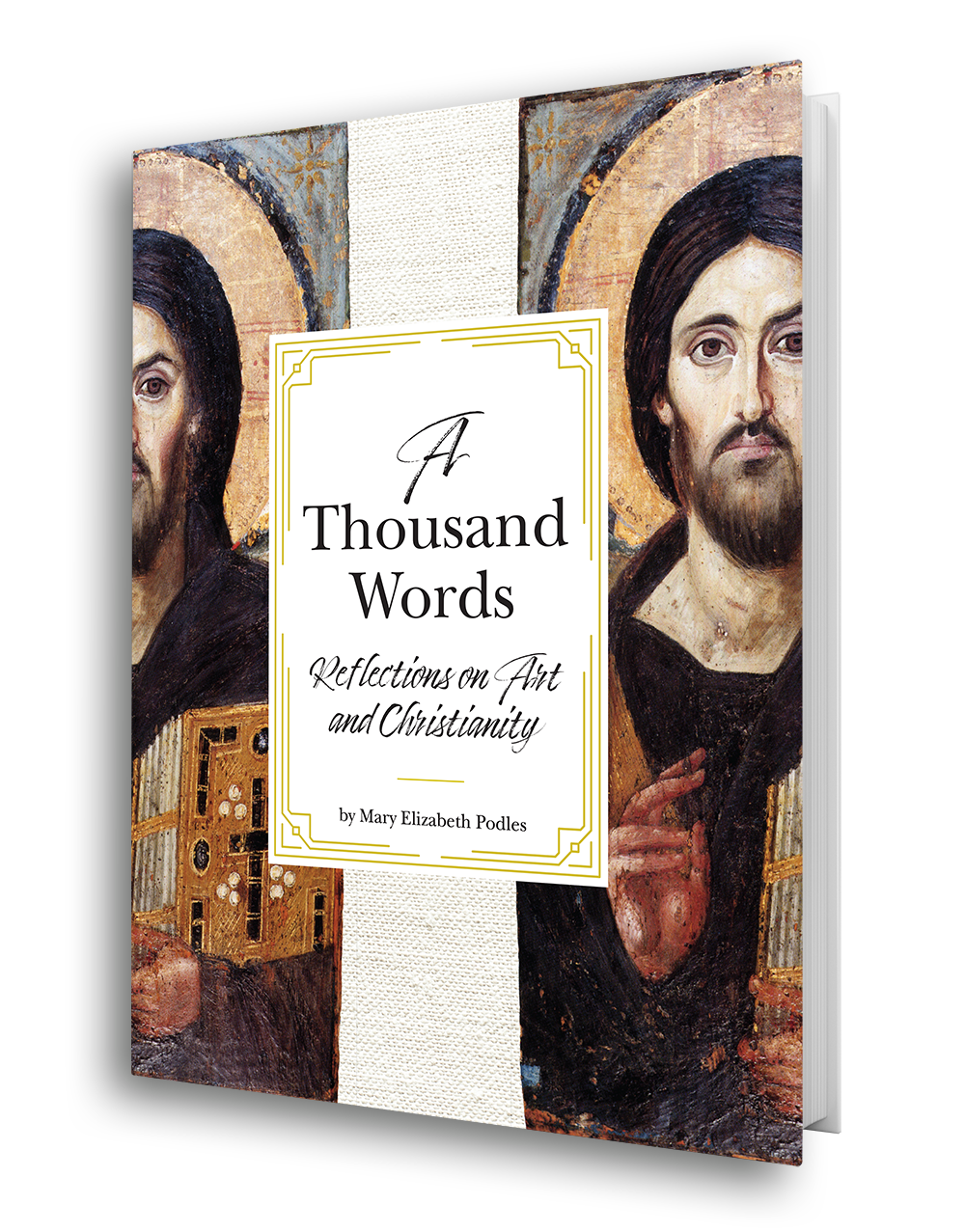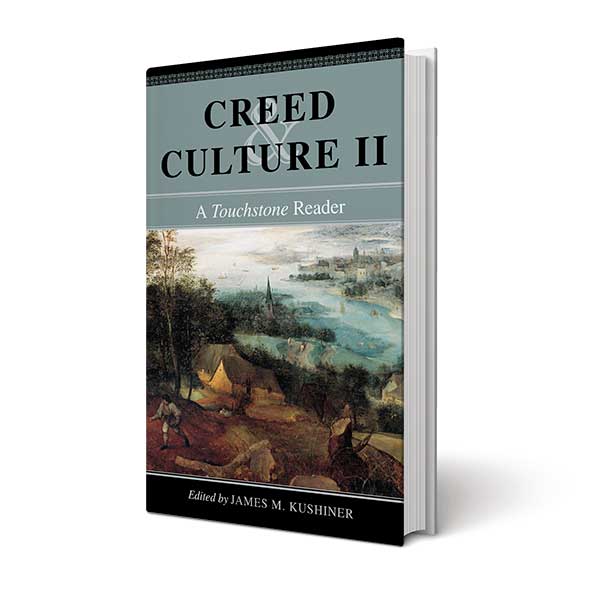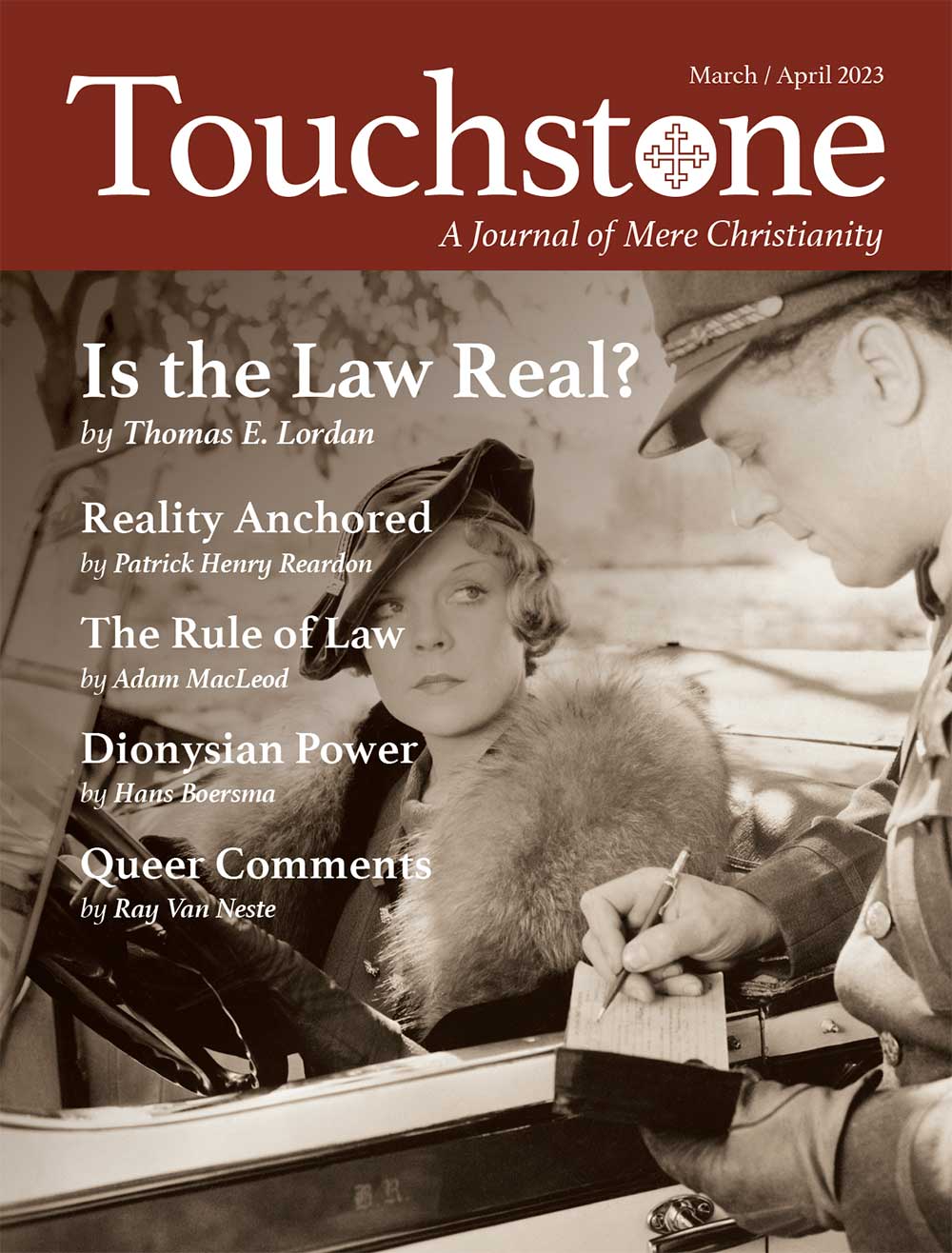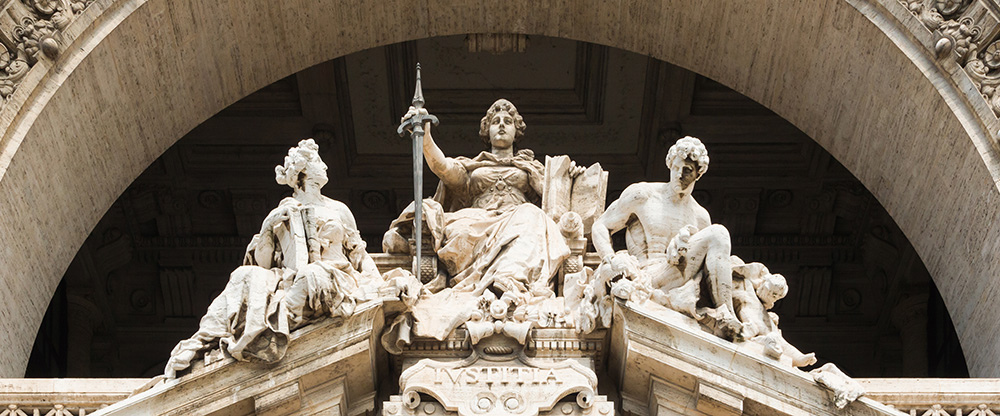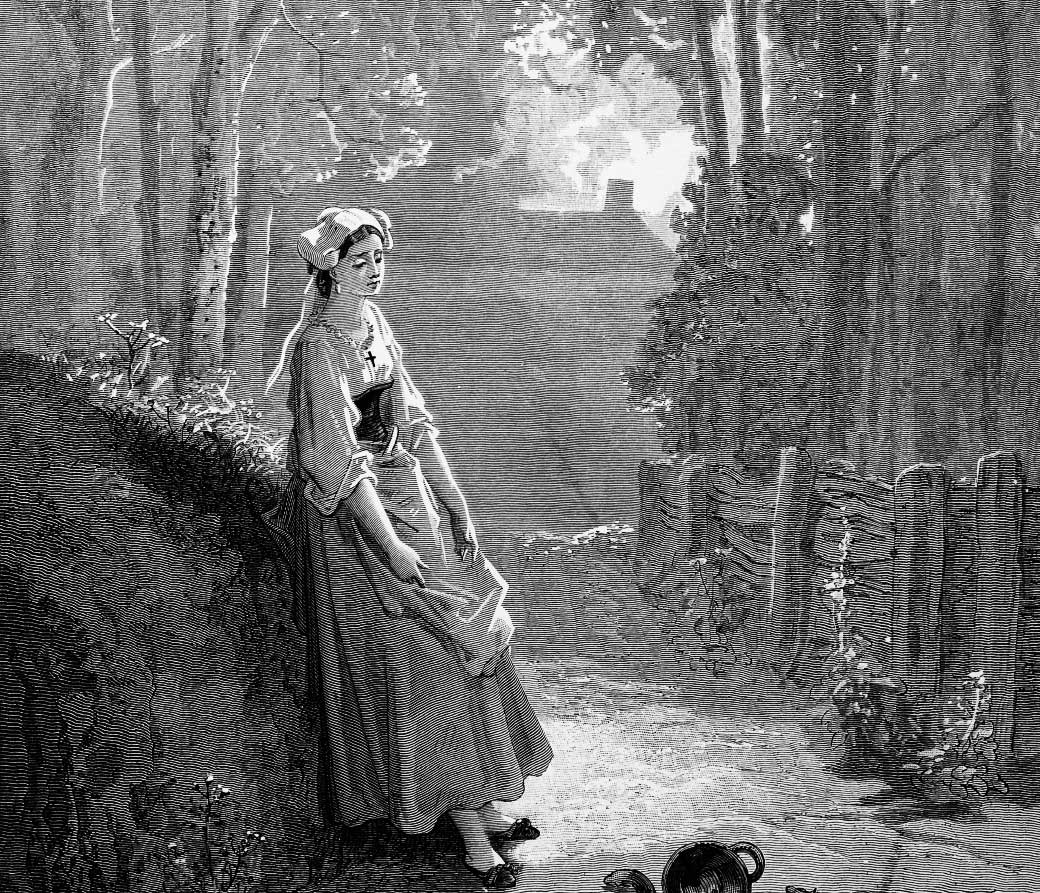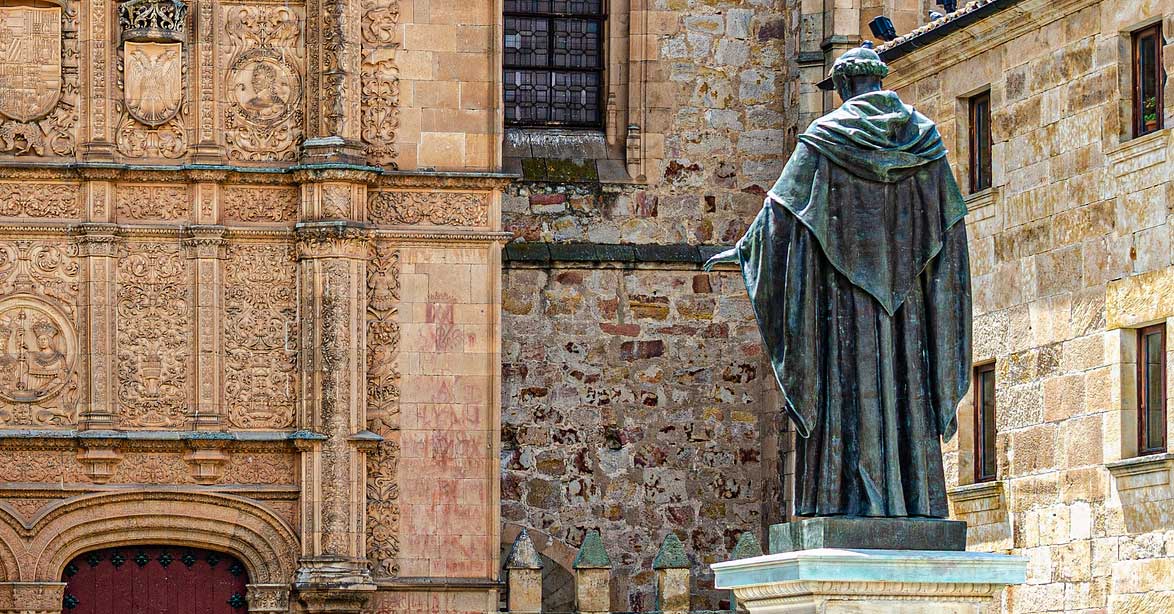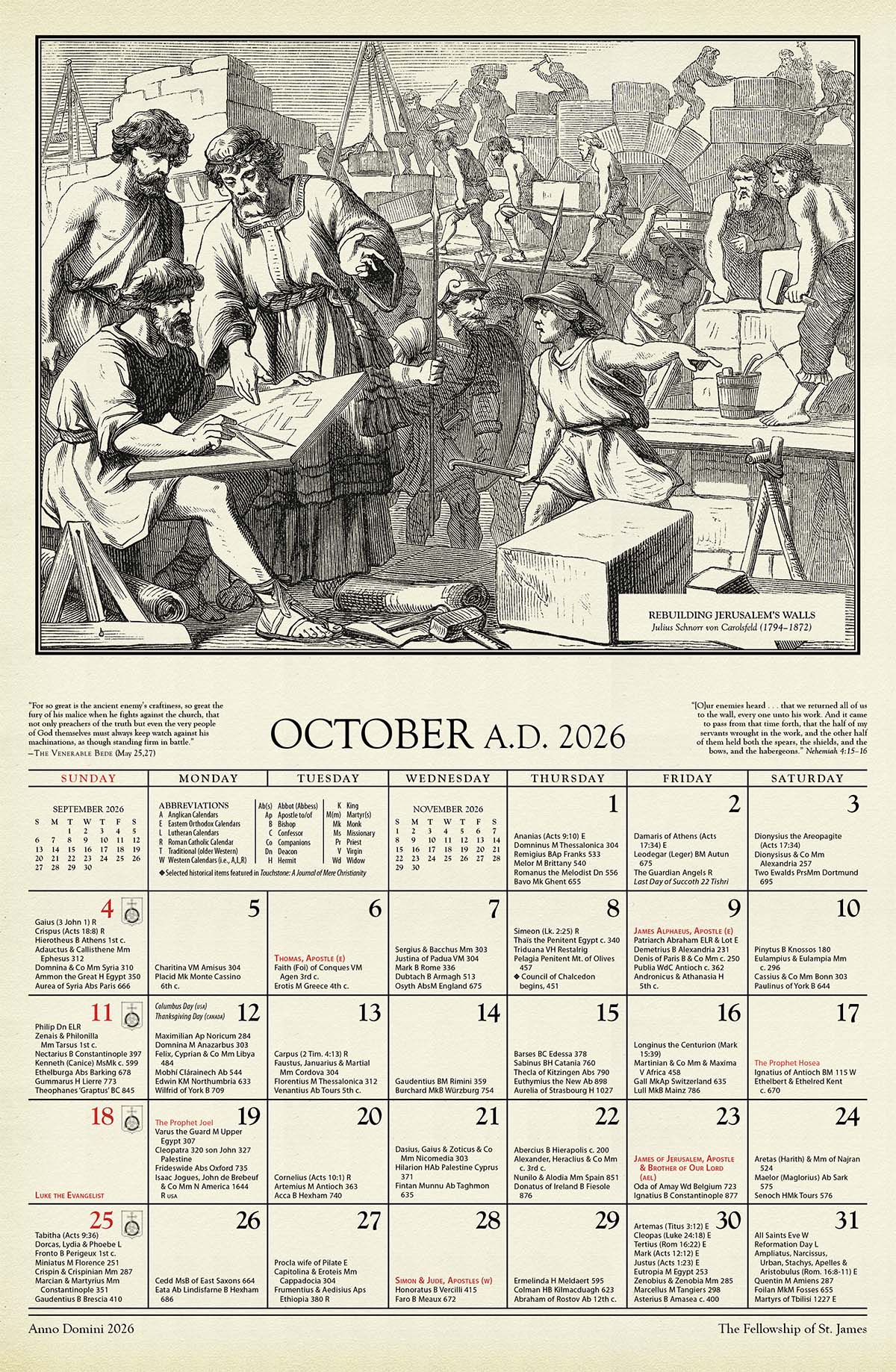The Unreal Vortex
Critical Theories & the Rule of Law
Imagine that your neighborhood is under attack. You and your neighbors arm yourselves and go out to fend off the attackers. You hear a roar and feel the ground tremble. You look up. You see the attackers approaching.
They are a line of tornadoes.
How are you going to fight them? You can’t engage a tornado with intelligence. Have you ever tried to reason with a tornado? You can’t engage it with force. Ever tried to wrestle a tornado to the ground?
You can’t even surrender to the tornadoes or negotiate a ceasefire. A tornado does not want anything. A tornado is not anything real. It is pure, destructive power. If you were to stand in the middle of the tornado you would discover . . . nothing. At its center —at the core of what it is —a tornado is the absence of being, a localized low-pressure system whose essence is simply the lack of what it is trying to pull into itself.
At its edges, the tornado has the appearance of substantive existence. But that’s an illusion. The tornado is pure form. What makes it seem substantive is that, as the tornado moves along, uprooting everything in its path, it takes into itself all the material it has smashed. To the extent that the tornado has any substance to it, it has stolen that substance from the very things it destroyed.
The Need to Understand
This is like our situation in the United States today. We are facing a line of ideological storm rotations that uproot everything and smash all things to bits. The storms in this line travel together because they are basically the same ideology. All the critical theories —Critical Legal Studies, Critical Race Theory, Dominance Feminism, Intersectionality Theory, Queer Theory —all of them appear to have substance because they are full of the debris of the norms and institutions they are destroying. They seem to be real, but in fact they wield the detritus of Western civilization as weapons: the splinters of due process and the rule of law, the shards of virtue and beauty, the fragments of logic and Logos.
Our challenge is to understand these theories. We must try to understand them for the same reason we should try to understand the philosophy of Hegel and Marx and the jurisprudence of Roger Taney and Harry Blackmun. The most persuasive ideological writings contain kernels of truth that resonate with people. And we should seek to understand the ideas that influence our neighbors and colleagues, including the bad ideas.
Furthermore, not everything critical theorists are doing is bad. All that critical theories can do is tear down. But some things deserve to be torn down. Much of the injustice that critical theorists criticize needs to be exposed and examined honestly. Many American elites really have established systems of unjust oppression throughout American history. Slavery, Jim Crow, eugenics, abortion, and other systematic injustices give powerful leverage over the weak. They must be destroyed because they are so destructive.
The irony, of course, is that critical theories are fashioned from the same intellectual materials that gave us those unjust systems. The same attempt to classify human beings according to a scientistic determinism, which gave us eugenics, also gave us the constructs of “heterosexual,” “homosexual,” and “transgender.” The same ideology used to rationalize slavery also gave us the abortion industry; both rest in the denial that all human beings are natural persons.
Furthermore, critical theorists wrongly identify as American the oppressive systems that they criticize. Those unjust systems of oppression are precisely not the norms and institutions of American law and constitutions. They are distinctly opposed to America’s founding political principles, such as the self-evident truth that all humans are created by God with equal dignity and rights. They directly contravene and abrogate America’s founding legal norms and institutions, such as due process and equal protection of the laws. You can’t have exclusionary zoning and racially restrictive covenants without destroying the private property rights that constitutional due process clauses were written and ratified to secure. You can’t have forced vaccination, forced sterilization, or abortion without infringing upon the fundamental common-law rights of life and limb.
Critical theories do not distinguish between the oppressive systems they condemn and the just norms and institutions that the architects of those oppressive systems co-opted. Like tornadoes, critical theories clear everything in their path, good and bad alike. They have no means to tell the difference. They condemn segregation even as they reject the radical human equality that stands opposed to segregation, the true knowledge that all human beings are equally created in God’s image. They condemn slavery even as they disparage and deny the natural rights that stand opposed to slavery, the right of each and every human being to exercise the practical reason given to each of us by God.
The Basic Features of Critical Theories
Once one understands critical theories, this inability to discriminate between good and evil makes sense. If one thinks that concepts of good and bad, right and wrong, are themselves arbitrary discursive regimes established by the powerful to define out of existence the subjective experiences of the marginalized —and, as explained below, that is what critical theorists believe and teach —then one will also believe that all discrimination must be avoided, including discrimination between good and evil, true and untrue, lawful and unlawful. One will disparage the vestiges of Jim Crow and eugenics and will simultaneously disparage natural rights and common-law institutions, the juristic resources that have proven successful to overcome slavery, racial segregation, and eugenics.
Different critical theories focus on different aspects or domains of law and society. So on the surface they may seem to be quite different from each other. But the differences are merely differences of emphasis and interests. The theories are essentially all the same. They all share two basic features, which they did not invent but which they have adapted from twentieth-century European thought, especially French post-structuralism:
1. They deny that there is any reality for us to know apart from the cultural and linguistic constructs that those in cultural or political power have created. Nothing is given by nature or reason.
2. They insist that the use of language is endlessly contingent. Words and logic are not means to communicate or acquire knowledge of truth but rather are exercises of power that those in power use to define out of legitimacy the subjective experiences of the weak and marginalized. Many critical theories refer to these systems of hierarchical power relations as “discursive regimes.”
Recent critical theories, such as Intersectionality and Queer theories, add a third element:
3. They replace human nature with something known as “identity.” They place identity beyond the reach of reasoned discourse because they identify it with subjective, individual experiences. Those experiences do not correlate with shared virtues or common goods, such as legal justice and knowledge of truth, but rather are unique to each individual and therefore beyond the understanding and criticism of those who have not had the relevant experience.
Each of these intellectual moves has important implications for our ability to know truth and to sustain the rule of law. Knowledge of truth and observance of the rule of law are the two most important requirements to achieve legal justice. So a lot is at stake.
First and most fundamentally, critical theories reject the idea that we can know reality. Truth is a knowledge claim or belief that conforms to reality. Because critical theorists reject knowledge of reality, they reject truth.
Critical theories teach that all reality is made up of cultural constructs and that all cultural constructs are just means by which some groups of people assert power and dominance over other groups of people. Critical theories deny that we are all made in God’s image. They deny that our rights come from God. They deny that there is anything essentially true about human nature, human reason, human society, or human law.
Aristotle & the Essence of Things
Critical theorists derisively refer to belief in a given reality as “essentialism.” And they insist that essentialism is just another kind of power relation. But essentialism is how we know. To know the essence of a thing is to know the intelligible logos that it embodies. It is to look past chaos and disorder and difference to see what most matters. To reject essence is to reject knowledge of truth. It is not to reject power but instead to substitute one power for another.
Since Aristotle we have understood reality by identifying and examining the essence of things. Aristotle taught as an enduring truth that a thing can be known as a particular instance of a general phenomenon by identifying what is necessarily part of its nature and not accidentally or contingently associated with it —its core or essence. Aristotle’s insight is the basis for all general knowledge.
For example, we can know certain things about dogs because there is an essential logic to dog-ness, a discernable set of characteristics that we can expect to find repeated in all of our encounters with animals that have the nature of a dog. Dogs are mammalian, meaning they are warm-blooded, have live births, and are covered with hair or fur. So dogs are not reptiles or amphibians or birds. Dogs are domesticated. They are not foxes or wolves or coyotes. Dogs are social pack animals. They are not bears. But dogs are not all golden. Golden fur is not part of the essence of dog-ness. A black lab and a white poodle are dogs just as much as a golden retriever.
This is why the existence of differences need not defeat our understanding of truth. To distinguish between essential and non-essential characteristics is to see both unity and difference within reality. That some dogs are short and some tall, that some are good pointers and others good flushers, that some are hairier than others, is no reason to doubt that there is an intelligible set of things in the world each member of which is a “dog.”
Aristotle also gave us a method for knowing the most essential truths, especially about ourselves: by considering the best example. In legal philosophy this is known as the “central case.” The central case enables us to identify what is most essential or centrally true about some type of human characteristic, relationship, or action.
Aristotle illustrated this method in his famous discussion of friendship. Not all human relationships are friendships in a strong or full sense, though many different human relationships exhibit some traits of a friendship. This variation need not lead us to conclude that friendship is a discursive regime concocted by extroverts to discriminate against introverts. No, we can understand friendship as a real and repeatable phenomenon by studying the essence of the strongest example of friendship, which is that each person in the friendship acts for the well-being of the other person or persons. In this central case, each person pursues and acts for the good of each other person, each desires the other person’s well-being for its own sake and not for purely selfish reasons, and each person reciprocates the desire and action for the good of the other person.
To be sure, we find in the world weaker examples of friendship, such as commercial transactions, wherein each person acts for the good of the other only instrumentally, as a means of providing the service or item that the other wants for some personal economic benefit. We also find defective friendships, wherein some person exploits another person as an instrument for personal satisfaction. But as long as we keep in mind Aristotle’s central case of friendship, the existence of weak and defective friendships need not make us doubt the possibility of achieving real friendship. Weaker friendships simply have less of the essence of friendship. So we can distinguish between a friend and an acquaintance or between a friend and an enemy.
Reasoning from the Central Case
Just as there are true friends and false friends, there is true justice and false justice. We can distinguish between justice and injustice, and between true justice and lesser instances of justice, by picking out what is most essential to a repeatable just act, such as honoring a contract, and to a repeatable unjust act, such as murder.
Common-law lawyers are familiar with Aristotle’s method because it is the way we reason from precedents to rules to judgments. In new cases and hard cases, we start with the central case, usually a known precedent or a legislated proposition. We discern its essence. Then we apply the essential aspects of the central case to the new case. For example, we look to earlier-decided murder cases and observe that a conviction for murder stands only when the defendant is found both to have acted to cause the victim’s death and intended that the victim die. A culpable intention is part of the necessary essence of murder.
Consider an illustration from a debate between two of the twentieth century’s most important legal philosophers, H. L. A. Hart and Lon Fuller. A city ordinance reads, “No vehicles in the park.” Now we are confronted with a series of supposedly hard cases. A teenager rides through the park on his skateboard. An ambulance enters the park to carry a distressed jogger to the hospital. A civic group that wants to honor war veterans proposes to mount an Abrams tank on a pedestal. Do these come within the prohibition of the ordinance?
To skeptical postmodern scholars, these cases may pose an insuperable obstacle to the rule of law. The term “vehicle” is hopelessly indeterminate because the whole concept of a vehicle is merely a linguistic construct. There is no universal sense of “vehicle,” only a random series of distinct phenomena on any number of which we might choose to employ the word “vehicle.”
But to lawyers who are trained to do the work of practical reasoning under law, the existence of hard cases does not make the law hopelessly indeterminate. Lawyers know that the city council had a central case of vehicle in mind when it enacted the ordinance. They thought of a sedan, pickup truck, or minivan. The lawyer discerns from that central case the essence of a vehicle —a functional, self-propelled automobile used to carry people into the park for non-emergency purposes —and applies that understanding to the pending cases.
No Law, Just the Power to Decide
Knowledge of essential reality is the epistemic foundation of the rule of law. Without it, we can’t have law, only zero-sum power contests between different factions of people. We may have as many opinions about the meaning of “vehicle” as there are people in the room. If they are all equally (in)valid, then there is nothing to settle the question but pure power.
The father of Critical Legal Studies, Harvard professor Duncan Kennedy, was quite candid about this implication of his own critical theory. Writing several decades ago, he asserted that the techniques of legal reasoning that lawyers learn in law school are “only argumentative techniques”:
There is never a “correct legal solution” that is other than the correct ethical and political solution to that legal problem. Put another way, everything taught [in a law school classroom], except the formal rules themselves and the argumentative techniques for manipulating them, is policy and nothing more. It follows that the classroom distinction between the unproblematic, legal case and the policy-oriented case is a mere artifact: each could as well be taught in the opposite way.
By “policy” Kennedy does not mean scientific analysis of legal changes driven by rigorous empirical studies and mathematical models that produce statistically significant results. He means instead the judge’s own assessment of which possible result in the case would be best. The implication of Kennedy’s thesis is that we can’t have the rule of law. Everything boils down to the power to decide.
Supreme Court Justice Ketanji Brown Jackson demonstrated this way of thinking during her confirmation hearings. When Senator Blackburn asked her to define the term “woman,” Jackson explained why she could not define the term in the particular context of a Senate hearing. “[I]n my work as a judge, what I do is I address disputes. If there’s a dispute about a definition, people make arguments, and I look at the law, and I decide.”
Justice Brown Jackson’s remarks make sense if one assumes there is no immutable, enduring, essential reality to womanhood. The definition is always open to argumentative manipulation in each case. And in the end, the judge decides.
The Essential Human Nature
We can’t have the rule of law if there is no truth to know about meaning and legal justice. If there are no objective standards, no natural persons, no accurate interpretations of laws, no correct legal solutions independent of our personal preferences and opinions, then we have no reason to demand justice from anyone. The most anyone can do is demand one’s own justice. But if your justice conflicts with their justice, and they have an equal claim to demand their justice from you, then you are at an impasse. You’re stuck. What gets us out of the traffic jam is reason’s capacity to know what is true and legally correct.
We need to know essence also to have fundamental rights. The factual foundation (though not the only condition) for all universal human rights is the essential or core truth about human nature. Yes, we find differences among human beings —different skin colors, different languages, different foods, music, and sports. But despite all that variation and difference there really is such a thing as a human being, an essential unity of human being-ness. What makes a human being a human being —a natural person —rather than some lesser kind of being is objective, universal, and shared in common with all other human beings: an essential human nature.
Throughout the history of Western jurisprudence, jurists have identified this human nature with what Jews and Christians call the imago Dei —the image of God in us. The idea is that, despite their differences, every human being you ever encounter possesses the radical capacity to choose and act for good reasons, not merely passions and appetites, and to order some part of the world in the present as God acts for the good over all eternity.
The pagan Roman jurist Cicero, from whom Justinian and all Western jurists for more than a millennium derived their definition of justice, saw the same essence. He described “the creature of foresight, wisdom, variety, keenness, memory, endowed with reason and judgment, which we call man,” who “was created by the supreme god to enjoy a remarkable status.” Of every creature on earth, man “is the only one that participates in reason and reflection.” And there is nothing “more divine than reason (a faculty which, when it has developed and become complete, is rightly called wisdom).”
The imago Dei is how we distinguish beings with intrinsic worth from all other creatures on earth. This idea motivated the first abolition of slavery throughout Christendom in the first millennium after Christ and the second abolitionist movement in the eighteenth and nineteenth centuries. It is the source of our civilization’s commitment to human dignity and equality before the law —and not only to the rule of law but also to freedom of religion and conscience, to the civil liberties of expression and association, and to rights of property and contract. These rights make possible universities and schools, art and music, medicine, intellectual property, prosperity.
In the critical theorists’ account, what is most important about being human is not the imago Dei —there is no such thing —but rather pure power. To be human is simply to have the capacity to subject other people and the natural world to oppression and inequality. For example, what is most important about law and American constitutionalism is not that our political societies have (haltingly, imperfectly) achieved the rule of law over the rule of powerful men but rather that some powerful people have in various times and places torn down the rule of law and established systems of oppression.
Here’s the good news: in practice, no one really thinks that. Even the most postmodern, woke critical theorist acts and speaks as if there are objective truths about justice. The demand Give us justice! presupposes that there is something to give, something that exists independently of our preferences and opinions, something that we can all understand with our minds and act upon.
We do understand. And we do act. By our practical deliberations and actions —our commitments, the institutions we build, the speeches we make, the ways we order our communities —we demonstrate that when we pursue justice we are pursuing an object that can be known and pursued and achieved. So there must be a truth about justice, a truth that does not depend upon our agreement or assent.
Putting Defects at the Center
The kernel of truth in critical theories is that human beings do have a tendency to exploit and oppress each other. Classical philosophers and jurists call this vice. Jews and Christians call it sin. We have not well understood the full implications of all of our unjust acts and practices. The value in critical theories lies in their clarity about injustice. The defect in critical theories is that they move injustice to the center of human relationships and shuffle righteousness and reason to the margins, or deny their existence altogether.
This move rests on a method that all critical theories employ in varying degrees. In their studies, they replace essential human nature and achievements with accidental features and defective human relationships. What is good and noble and true is shunted aside. What is defective and perverted and unjust is moved to center stage. So instead of understanding ourselves as creatures who are designed by God to order some part of the world to the good, the true, and the beautiful, we come to understand ourselves as inherently oriented toward exploitation, deception, and consumption.
Consider the 1619 Project’s focus on the Jamestown settlement and its failure to celebrate the slave-free settlement of Plymouth Plantation in 1620. Which of those early American settlements is more central to American ideals and institutions? How one answers that question will determine how one defines “America.” An America founded for the purpose of preserving slavery is radically different from an America whose essence is characterized by the Mayflower Compact and gratitude for divine providence.
Which history we identify as more essential matters because our histories tend to become self-fulfilling. Critical theorists understand this well. Histories that emphasize American ideals of natural rights, common-law institutions of legal justice, and political equality before the law motivate people to strive for a more perfect and just Union. Histories that emphasize our moral failings and injustices are used to justify further injustices. Throughout American history, the people who marginalize or denigrate American ideals and institutions are often the same people who build racist systems —from slavery, to the post-Reconstruction black codes, to retrospective zoning laws, to segregated housing policies, to eugenics programs, to the internment of Japanese Americans, to immunities for abortionists.
To build all of those artificial systems required either the denigration or the rejection of essential American ideals and institutions. Those ideals and institutions provide the source of the duty to respect all other human beings as bearers of the image of God, agents of rationality and creative power with intrinsic worth. They give us the means to achieve the abolition of slavery, civil rights, and the rule of law.
Nothing but Competing Discursive Regimes
Critical theories insist that all founding American ideals and institutions are illicit discursive regimes. This is the second essential element that they share in common. Meaning is not a shared and universally accessible way of communicating truth. Instead, meaning is constructed within exclusionary regimes of concept formation. A discursive regime is a linguistic and cultural construct. It is arbitrary in the sense that it is not oriented toward reality. Powerful people make up discursive regimes not to understand or describe what is real but to control the terms of discourse.
In the most thoroughgoing critical theories, every way of communicating is a discursive regime. All communication is thus a zero-sum competition between discursive regimes. Each discursive regime is designed to force other discursive regimes out of existence, by defining away the conceptual categories that would make their communication and practice possible.
The normative implication of this is that, in order to survive, each discursive regime must do whatever is necessary to supplant competing discursive regimes. In short, in critical theories there are no reasons for action. No divine or natural law. No authority other than subjective experience.
Since all normative frameworks are discursive regimes, the only way to get rid of a discursive regime is to replace it with another discursive regime. That is what critical theorists are doing now. They feel justified in replacing law with their consequentialist ideology because in their view everything is constructed from cultural and linguistic power. There is no higher law. There are no objective truths. To see this, think what the redefinition of “marriage” does to our ability to know the truth that all children have a mother and father.
Indeed, there is no such thing as a human being. Human existence itself is socially constructed. This is clearest in the American versions of critical theory, which add a third element to critical thought. They divide people into identity-based groups and then identify different discursive regimes with different races, sexes, gender identities, and/or socio-economic classes. In the purest of these theories, there are no truths other than the subjective experiences or feelings of different identity groups. The discursive regimes that now control our thought —logic, science, law, monotheistic religions —were all constructed arbitrarily by white men to define the subjective experience of less powerful identity groups out of existence.
Queer theorists and Intersectionality theorists are clear about this. They teach that the category of a “human being” is artificially constituted by what queer theorist Andrea Smith calls a relationship to “affectable others.” This relationship is always racial and gendered because all beings who aspire to the artificial concept of universal humanity only do so by asserting their racial and gender specificity.
In other words, the idea that human beings have anything in common —an essential nature, biological given-ness, human rights, shared capacities to reason and to order the world and to do what is good, duties to each other as fellow humans —all that is constructed by some racial and gender identity groups to conceal the fact that they exert power over other racial and gender identity groups by constituting their identities for them according to artificial racialized and genderized categories. Everything is artificial. And all is power.
Defeating the Cultural Storms
This way of thinking destroys legal education. We can either have law students who are taught to believe in critical theories or we can have the rule of law. We cannot have both. But critical theories are now firmly entrenched in the law schools. And they have quickly spread throughout the universities. How shall we respond to them?
We can’t reason with critical theories because at their core is the absence of reason. They are predicated on the assumption that the necessary elements of reason —all discernment of essence, all the first principles of practical reasoning, all the human goods, all the virtues —are arbitrary discursive regimes that must be uprooted and deconstructed.
Go ahead. Point out that a critical theorist has contradicted himself. You might as well stab a tornado with a bayonet.
Nor can we use power on critical theories. That’s playing their game. They themselves are pure power, and their power over you is their narrative that all you care about is power.
Go ahead. Point out that critical theories are used to justify racism and injustice. You might as well punch yourself in the face.
One cannot defeat these cultural storms with the weapons of political or cultural power. So what is the alternative? In short, to assert that we can know reality.
For law, this means that law schools must recover knowledge of law’s foundations, especially its foundations in Christianity, natural law, and the common law. The America that abolished slavery and has vindicated equal civil rights at various times in her history owes its existence to a conviction that we can understand the world and the good —a Christian understanding that all humans bear inherent and equal dignity, and a common-law understanding that human reason is capable of solving our practical legal problems through the formation of enduring customary rights and duties. Those convictions place power below the authority of human reason, and human reason below God.
It is no accident that natural-law thinkers and Christians led the first civil rights movement in the 1860s and 1870s and the second one in the 1950s and 1960s. Natural law and Christianity both supply the sine qua non for the rule of law to stand above rule by men: namely, a source of legal authority that precedes statutes, judicial decisions, and executive orders. Law can stand above politics because law exists prior to and independent of political and cultural power.
Where else would we turn? In the whole history of the human race, only divine law, natural law, and immemorial customary law have proven capable of supporting the rule of law. Every other concept of legal power devolves into some form of human command theory, which is ultimately used to justify rule by the most powerful person or class.
Legal justice is real, we can know it, and we have decisive reasons to achieve it. To hold fast to these convictions is the task at hand if we are to retain any hope of weathering the storms that are fast approaching. To know how legal justice was achieved in earlier generations is to have a blueprint for achieving it in our own. The best tornado shelters have deep foundations.
Adam MacLeod is Professor of Law at St. Mary’s University and a Senior Research Fellow of the Center for Religion, Culture and Democracy.
Share this article with non-subscribers:
https://www.touchstonemag.com/archives/article.php?id=36-02-038-f&readcode=10907
subscription options
Order
Print/Online Subscription
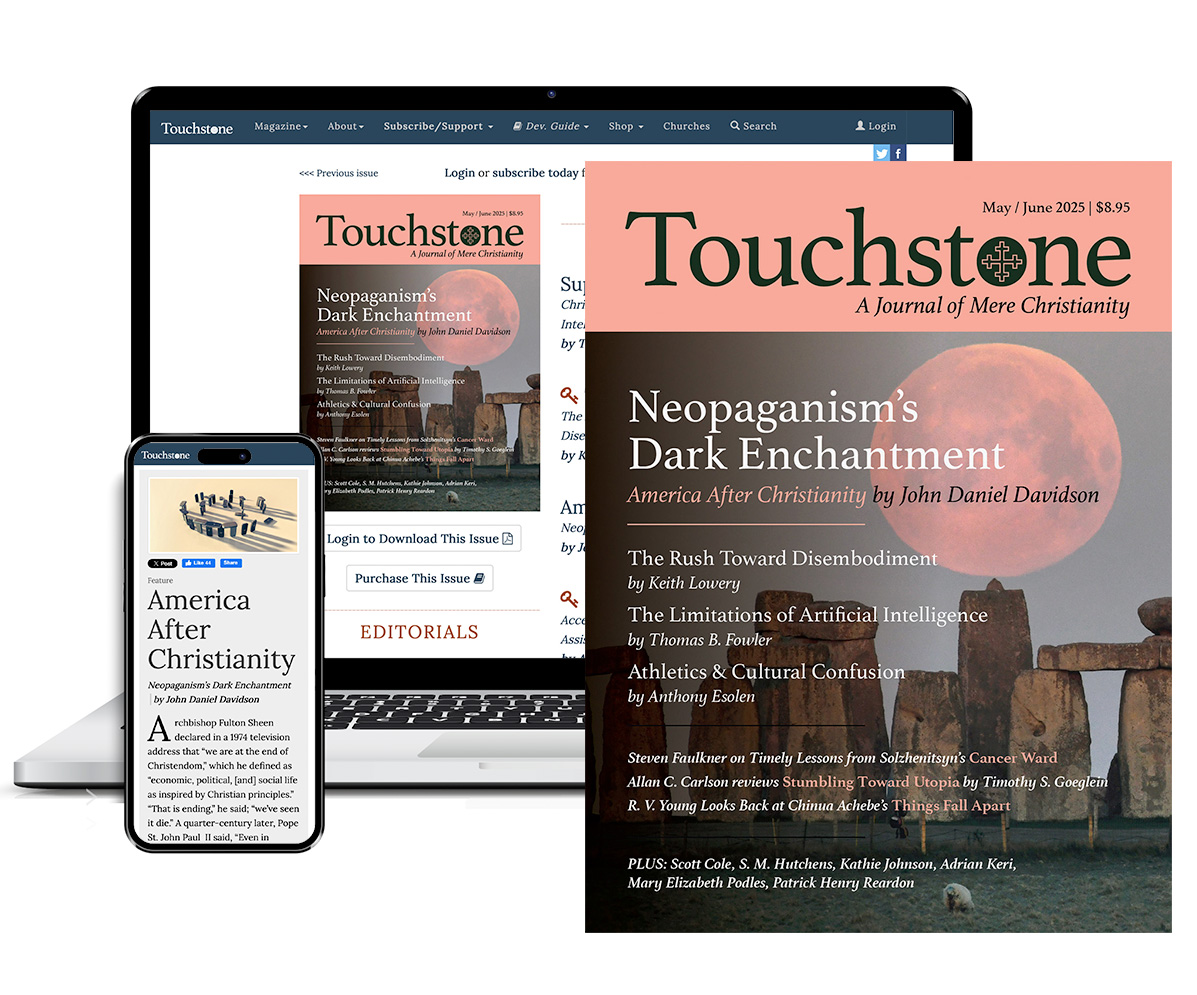
Get six issues (one year) of Touchstone PLUS full online access including pdf downloads for only $39.95. That's only $3.34 per month!
Order
Online Only
Subscription
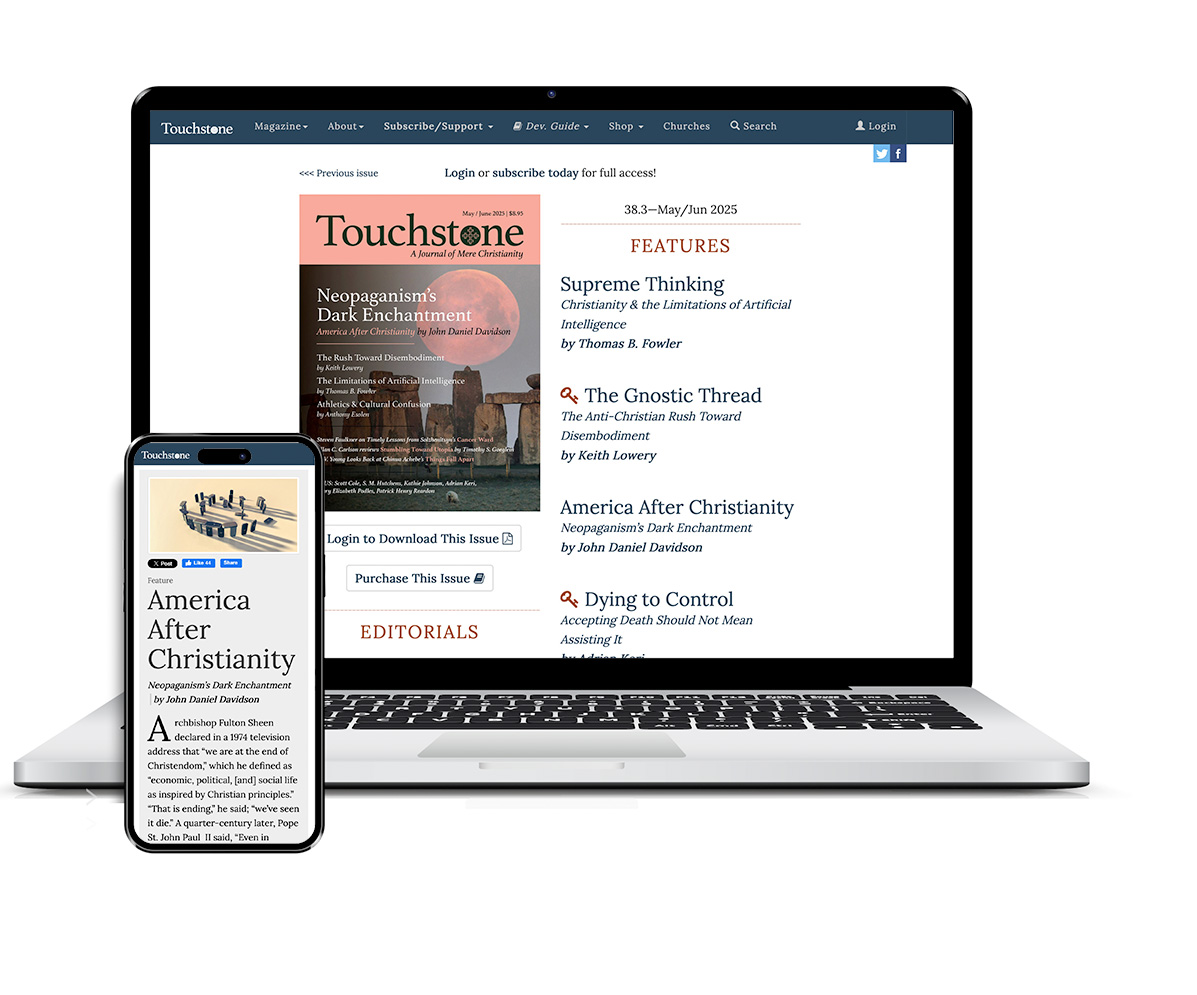
Get a one-year full-access subscription to the Touchstone online archives for only $19.95. That's only $1.66 per month!
bulk subscriptions
Order Touchstone subscriptions in bulk and save $10 per sub! Each subscription includes 6 issues of Touchstone plus full online access to touchstonemag.com—including archives, videos, and pdf downloads of recent issues for only $29.95 each! Great for churches or study groups.
Transactions will be processed on a secure server.
more on law from the online archives
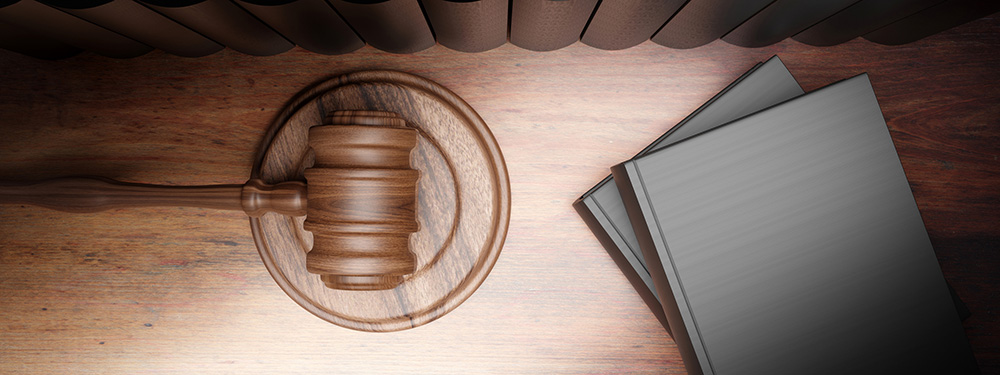
37.5—Sept/Oct 2024
Why Law Schools Can't Teach Law
A sidebar to How Law Lost Its Way by Adam MacLeod
more from the online archives
calling all readers
Please Donate
"There are magazines worth reading but few worth saving . . . Touchstone is just such a magazine."
—Alice von Hildebrand
"Here we do not concede one square millimeter of territory to falsehood, folly, contemporary sentimentality, or fashion. We speak the truth, and let God be our judge. . . . Touchstone is the one committedly Christian conservative journal."
—Anthony Esolen, Touchstone senior editor



